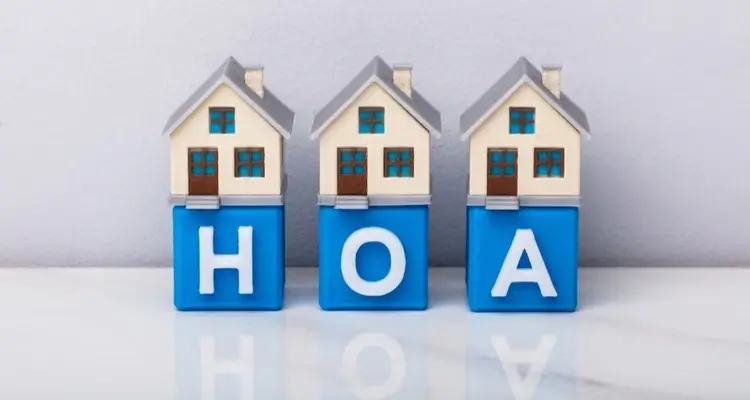
If you’re in the market for a mortgage you’ve probably heard of a conventional loan.
There are lots of mortgage terms that sound similar but are very different.
Conventional loans, conforming, non-conforming??
But with all the different types of home loan programs out there how do you know which is which, and what type of mortgage is best for you.
We will define these mortgage terms and explore the in’s and out’s of conventional mortgages..
RATE SEARCH: Find and Compare the Best Mortgage Rates
Conventional Loan Definition
A conventional loan is a mortgage that is offered by private lenders and is not guaranteed or insured by a Government agency. Conventional loans are known as a conforming loan because they meet the criteria set by Fannie Mae and Freddie Mac.
Why Conventional Loans are so Popular
Conventional loans are the most popular type of mortgage used today. A conventional mortgage is a conforming loan because it meets the standards set by Fannie Mae and Freddie Mac.
A conventional loan is not a Government backed mortgage such as FHA, VA, USDA, and FHA 203k Loans. These mortgages are offered by private mortgage lenders and are usually sold to the largest buyer of mortgages, Fannie Mae and Freddie Mac.
The Benefits of a Conventional Mortgage
Some of the main advantages of conventional loans vs Government loans is that mortgage insurance (PMI) is cheaper. PMI is not required if you have at least 20% to put down.
Conventional mortgages are also available for most any type of property. Unlike FHA loans, you can get a conventional loan on a second home or investment property.
The Pros and Cons
Conventional Loan Pros
- Loan amount up to $424,100 ( $625,500 in high cost areas)
- No up-front PMI
- Most properties accepted
- Mortgage insurance drops after LTV reaches 78%
- Zero down payment with 20% down
- Cheaper PMI than FHA
- Conventional 97 loans require 3% down
Conventional Loan Cons
- Higher credit score minimums (620-640 score required)
- Down payment is higher than Government loans
- Slightly higher rates than FHA
- More difficult to qualify for
- More strict income guidelines
Comparing FHA vs Conventional Loans
FHA loans are the second most commonly used type of mortgage loan. They’re great for first time home buyers because of their low down payment of just 3.5%, and low credit score requirements. You can qualify for FHA with just a 580 credit score. You can have a 500+ credit score if you have 10% to put as a down payment.
Conventional vs FHA Comparison Chart
2017 Conventional Loan Requirements
Conventional loan requirements are more stringent than Government backed mortgages. Here are some of the basic loan requirements as of 2017.
- 2 years of solid employment history
- Income must be verified via W2’s, Tax returns
- 640+ credit score
- 5% – 20% down payment
- 2-3 months of mortgage payments in reserve funds
COMPARE LOAN OFFERS: Search Lenders and Compare Rates
Conventional Loan Credit Score Requirements 2017
Conventional loans are best suited for borrowers with good credit. Most conventional mortgages will require a minimum credit score of 620-640. Having a higher credit score is even better. If you’re score is on the lower end, or below the minimum score required than an FHA loan may be a better option for you. Because conventional mortgage use loan level price adjustment (LLPA) the higher your credit score, the lower the mortgage costs will be. Check out the LLPA pricing chart here.
Down Payment (5% – 20%+)
Conventional loans do require a higher down payment than Government backed mortgages do. Most lenders will require 5% down with a conventional loan. However, the down payment could be 10% – 20%, or even higher for larger loan amounts.
Conventional Mortgage with 3% Down
Freddie Mac and Fannie Mae created a new program to help encourage homeownership and to compete with FHA loans called the Conventional 97 program. A conventional 97 loan requires just a 3% down payment, which is even lower than the 3.5% down payment FHA requires.
PMI
Unlike FHA loans, which require mortgage insurance to be paid regardless of how much money is used for a down payment, conventional loans do not require PMI with a 20%+ down payment. PMI is also less expensive on a conventional loan than FHA loans.
FHA MIP fee is between .80% and 1.00% depending on how much you put down and the amount of the loan. Conventional PMI is around 0.50% depending on your credit rating.
DTI (Debt-to-income)
Debt to income is the amount of monthly debt obligation you have compared to your income. A 36% DTI ratio is generally considered to be a very comfortable position. However, that ratio can be stretched to 43% in some cases, and maybe even higher than 45% if you have strong compensating factors such as a large down payment, large cash reserves, or an excellent credit score.
Compensating factors for high DTI ratios
- High down payment (Over 20%)
- Excellent credit score (700+)
- Large cash reserves
- High income
- 5+ years at current position/company
2017 Conventional Loan Limits
The loan limit in 60% of the U.S. is $424,100. There are higher costs areas such as Los Angeles and New York where the loan limit reached $636,150. This is much higher than the FHA loan limits of $271,050 and $625,050 in highest areas.
2017 Low-Cost Area Loan Limits
| Units | District of Columbia and Puerto Rico | Guam, Alaska, U.S. Virgin Islands, and the Hawaii |
|---|---|---|
| 1 | $424,100 | $636,150 |
| 2 | $543,000 | $814,500 |
| 3 | $656,350 | $984,525 |
| 4 | $815,650 | $1,223,475 |
201 7 High-Cost Area Loan Limits
| Units | District of Columbia and Puerto Rico | Guam, Alaska, U.S. Virgin Islands, and the Hawaii |
|---|---|---|
| 1 | $636,150 | $954,225 |
| 2 | $814,500 | $1,221,750 |
| 3 | $984,525 | $1,476,775 |
| 4 | $1,223,475 | $1,835,200 |
How much home can you afford calculator
If you’re needing a loan that exceeds the conforming loan limits above. You will need a non-conforming loan, such as a jumbo mortgage.
Eligible Property Types
A great benefit of conventional mortgage is that they are available on many types of properties.
- Single Family Homes
- Condos and town homes
- Rehab properties
- Muli-unit properties
- Planned unit developments (PUDs
Second Homes and Investment Properties Eligible
Government loans such as FHA and VA loans are available for owner occupied properties only. If you’re buying a second home or investment property you will need to get a conventional loan. Real estate investors can use conventional loans to purchase an investment property in good condition or one in need of repairs.
Conventional Loans and Recent Bankruptcy
Like with most all other types of mortgage programs, conventional loans do have a waiting period after a bankruptcy, foreclosure, or short-shale. A lender will not only look at the amount of time that has past since the financial situation occurred. Fannie Mae will also want to see that you have recovered from the financial hardship. Your credit history should have recovered as well. You should have multiple open accounts in good standing with no late payments.
Below you will find the waiting periods for each type of derogatory credit event. Extenuating circumstances are events that occurred outside of the borrowers control that resulted in a sudden loss of income.
|
Derogatory Event |
Waiting Period |
Waiting Period with Extenuating Circumstances |
|
Bankruptcy — Ch7 or Ch11 |
4 years |
2 years |
|
Bankruptcy — Ch13 |
4 years from dismissal date 2 years from discharge date |
|
|
Multiple Bankruptcies |
5 years from the most recent discharge or dismissal date |
3 years from the most recent discharge or dismissal date |
|
Foreclosure |
7 years |
3 years 90% maximum LTV ratios Purchase owner occupied |
|
Deed-in-Lieu of Foreclosure, Short-sale |
4 years |
2 years |
More information about these guidelines can be found on the Fannie Mae website.
Bottom line…
Conventional loans offer a wealth of benefits and are the most used type of home loan used today. Whether you are planning to occupy the property, buying a second home, or an investment property a conventional mortgage is a great option.
If you’re looking into buying a home in the near future you should speak to a lender about getting pre-approved for a mortgage.
COMPARE LOAN OFFERS: Search Lenders and Compare Rates
The Lenders Network has the largest network of mortgage lenders that specialize in home loans for borrowers with all types of credit scores. We will match you will the best lender based on your specific situation.



